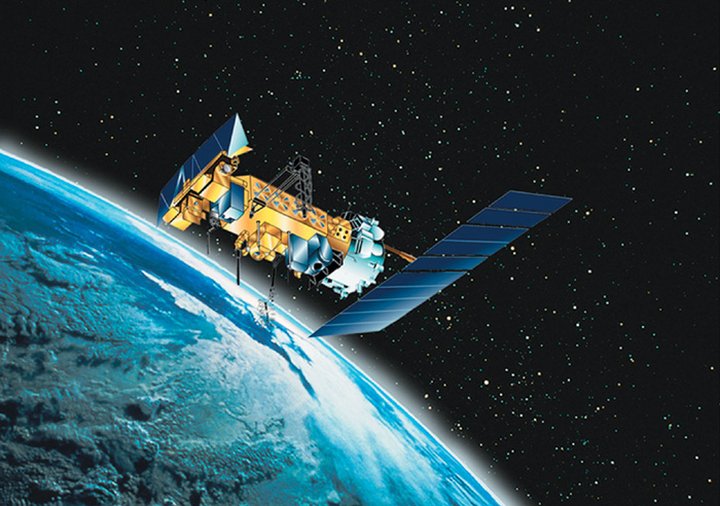
Image of a satellite courtesy National Oceanic and Atmospheric Association.
After the item was pulled from last week’s agenda without explanation, today the Board of Supervisors approved a contract with San Francisco company Planet Labs Inc. to provide high-resolution satellite imagery of the county’s rural areas, allowing staff to monitor both legal and illegal marijuana cultivation.
The contract was on the consent calendar, meaning supervisors could have approved it without discussion, but Second District Supervisor Estelle Fennell asked that it be pulled so that Planning and Building Director John H. Ford could address some concerns that her constituents had raised.
Those concerns, as you might expect, were about who will have access to the images and how how they will be used.
Ford explained that the satellite imagery, which will be updated at least five times per year, will be used for code enforcement — cracking down on illegal weed grows spotted from space — as well as site inspections for development permits, allowing county planning staff to see conditions on the ground without physically traveling to each property.
Ford said these physical site inspections are time consuming.
”On Sundays we’re sending inspectors out, and they can literally visit three sites a day. It takes an hour and a half to get down there and an hour and a half to [travel] between sites.”
The satellite images will allow staff to look at property before permitted marijuana cultivation takes place and track those activities over time — all from the comfort of a computer screen.
Ford assured the public that the images won’t be used for proactive building code enforcement investigations, which continue to be complaint-driven. Instead, the satellite imagery will be used for proactive investigations only for the purposes of cannabis enforcement and abandoned vehicle abatement, Ford said.
The authorized viewers of the images will include county staff, though Ford noted that they work collaboratively with other government agencies, including the California Department of Fish & Wildlife and the North Coast Regional Water Quality Control Board. While no formal sharing agreements have been reached, Ford suggested that those agencies may well have access to the imagery.
They’re also a matter of public record, and Ford said county staff intends to upload one full set of images per year into the county’s online geographic information system (GIS) mapping application.
Fennell said she received a phone call before the meeting this morning from someone who wanted to emphasize the importance of using this technology to crack down on illegal weed growing operations. “There’s a great degree of support for [using the satellite imagery] as a tool … to clean things up in the county with regard to that issue,” Fennell said.
First District Supervisor Rex Bohn downplayed privacy concerns, saying satellite imagery was first used in 1949 and is now utilized by 70 percent of public agencies. (The Outpost has not verified this claim.)
“The basic thing is, if you’re doing everything right this shouldn’t bother you at all,” Bohn said.
McKinleyville resident and former county planning commissioner Dennis Mayo didn’t care for that formulation and told Bohn as much. Mayo said he had some privacy concerns, wondering of some obscure non-governmental organization — “anyone with an ox to gore” — might be able to gain access to the images.
Ford repeated that the images will be public record, available to anyone who might choose to file a Public Records Act request.
Supervisors directed staff to come back with an official policy spelling out how the imagery will be shared with other agencies, and with that the motion to approve the contract was approved unanimously, with Third District Supervisor Mike Wilson absent.
CLICK TO MANAGE